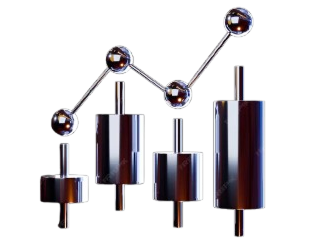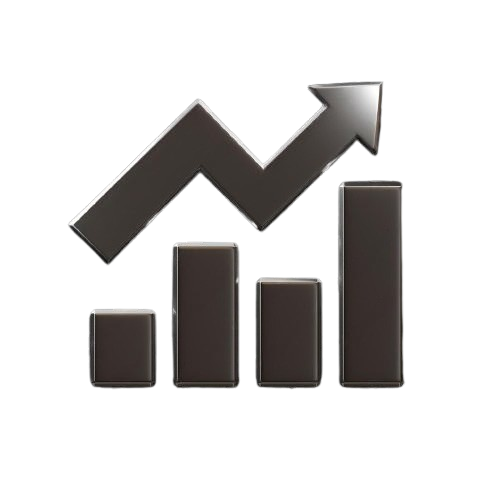Starting Price
₹ 5900.00
₹3540
(Including GST)
The Research Analyst behind Commodity Samachar brings years of market understanding backed by data-driven research and a strictly process-oriented approach.
Every recommendation is developed through disciplined analysis of market structure, global cues, sector performance, and price-volume behaviour — ensuring each call is rooted in research, not speculation.
Registered with SEBI as a Research Analyst (RA), the analyst follows all mandated guidelines such as conflict-of-interest disclosures, record-keeping, investment rationale documentation, and research independence protocols.
This ensures all insights delivered to clients are objective, transparent, and aligned with regulatory standards.
With expertise across equity, derivatives, commodities, and positional swing models, The RA focuses on providing high-quality, well-researched insights designed to help traders and investors take informed decisions — not guaranteed returns.
Our mission is to empower traders and investors with reliable research, ethical advisory support, and innovative compliance-driven tools — enabling them to grow consistently while staying protected in the financial markets.
Our vision is to revolutionize the trading ecosystem by empowering every market participant with authentic, research-backed, and compliant financial guidance. We aim to build a future where traders can rely on transparent advisory support, advanced analytical tools, and simplified investment knowledge to make confident market decisions. By combining technology, ethics, and expert research under one unified platform, we strive to create a trading environment where success is not based on luck but on informed strategy, discipline, and trust.
More Than 24+ Years Experience We Provide Services

Actionable Research Reports
Received comprehensive research reports/ recommendations on commodities, including Gold, Silver, Crude Oil, and Natural Gas. Our analysis focuses on both technical and fundamental factors to assist with informed decision-making.

SEBI Registered Entity
Trust in a Research Entity that is a SEBI Registered Research Analyst (RA). Our operations are governed by the regulator's mandate for fair & Ethical practice, transparency, and research integrity.

Timely Market Updates
Access system-generated levels and real-time news analysis throughout the trading day, providing a current view of market trends and potential trade setups.

Commitment to Compliance
Commitment to Compliance We adhere to strict regulatory standards, including mandatory e-KYC procedures and clear investor grievance redressal mechanisms, ensuring transparency and client protection in all our dealings.
Stay ahead with expert insights! Watch my free tutorial videos covering market trends,
investment strategies, data analytics,
and industry forecasts to make informed decisions.
Choose the subscription plan according to your requirement and make the payment online through our different payment mode.
After a successful payment you will get a subscription code and a telegram link. Click on the link to start chat window and put the subscription code.
After you put the correct subscriptions code and hit the send button, you will get a telegram channel link, which you need to join in. Please remember telegram channel link could be used for onetime only.
Unlock Premium benefits—Subscribe to our plan today!
Starting Price
₹ 5900.00
₹3540
(Including GST)Starting Price
₹ 5900.00
₹3540
(Including GST)Starting Price
₹ 30000.00
₹24999
(Including GST)Starting Price
₹ 45000.00
₹35999
(Including GST)Stay ahead with expert insights! Watch my free tutorial videos covering market trends,
investment strategies, data analytics,
and industry forecasts to make informed decisions.
The research, recommendations, and analysis provided under services 1 and 4 are based on our proprietary technical and f more...
The research, recommendations, and analysis provided under services 1 and 4 are based on our proprietary technical and fundamental research and are intended solely for the recipient.We do not guarantee any fixed returns or ensure that the recommendations will achieve their targets. Past performance is more...
We do not guarantee any fixed returns or ensure that the recommendations will achieve their targets. Past performance is not indicative of future results.Any Research Service given will be based strictly on the client’s risk profile, financial objectives, and suitability more...
Any Research Service given will be based strictly on the client’s risk profile, financial objectives, and suitability assessment completed via the mandatory Risk Profiling process.Services 2, 3, and 5 (Import & Export Intelligence/Analysis, Trade Policy & Regulatory Advisory) primarily relat more...
Services 2, 3, and 5 (Import & Export Intelligence/Analysis, Trade Policy & Regulatory Advisory) primarily relate to business consultation, physical commodity trade, and non-securities market data.We have set internal policies and procedures for managing and disclosure of. any potential conflict of interest governin more...
We have set internal policies and procedures for managing and disclosure of. any potential conflict of interest governing the dealing and trading by any research analyst.Beyond day trading: learn to build a diversified portfolio that balances growth and stability. Blend short-term trades w more...
Beyond day trading: learn to build a diversified portfolio that balances growth and stability. Blend short-term trades with long-term investments effectively.We help you see the world differently, discover opportunities you may never have imagined
and achieve results that bridge what is with what can be.
Have questions about global trade trends, market analysis, or custom research reports? We’re here to help! Reach out to us for expert guidance and data-driven solutions tailored to your business needs.
"Thank you, Commodity Samachar team, for the excellent service. Ankit is truly the best analyst in the world."